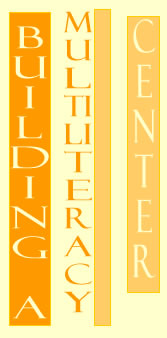

KHM:
How similar or different was your idea of building from a writing center
model from those models you researched at other universities?
DS:
Well, with James's
facility at Furman,
I think he was working from a writing center model, as well. He's written
extensively on writing centers and is very familiar with writing center
pedagogy. So, I think we would see a lot of overlap with how they do things
there. And I'm not as familiar with the specifics of the facilities that
Clemson has.
The situation is a little bit different at Michigan
Tech, from what I understand, because they're in the enviable position
of being able to have students actually do the composing at their lab.
It's a relatively large facility, a number of workstations, enough to
host maybe two small classes simultaneously. So the students can come
there and compose the whole project in the lab, and they just receive
support when they need it. I think that's a great model. It's also a very
resource-intensive model.
What we're able to do is to give students support for an hour and then
they go and actually do the bulk of composing off-site, at one of our
public labs, or at their personal computer. But we only have three workstations
right now, and we hope to increase that number and we hope to have more
space and more equipment. But, for the foreseeable future, we really can
only help a small number of people at a time and we're really designed
for the one-hour session. And, again, that comes from the writing center
model. You don't write your whole paper in the writing center necessarily.
You come there and you get a response, and then you go home and write
it or you go to a lab and write. It would be nice if you could write your
whole paper in the writing center, and anytime you needed support, you
just raise your hand and have a tutor come over to help you. But, that's
very resource-intensive, and right now we can't afford to provide that
kind of support.
Top | Next